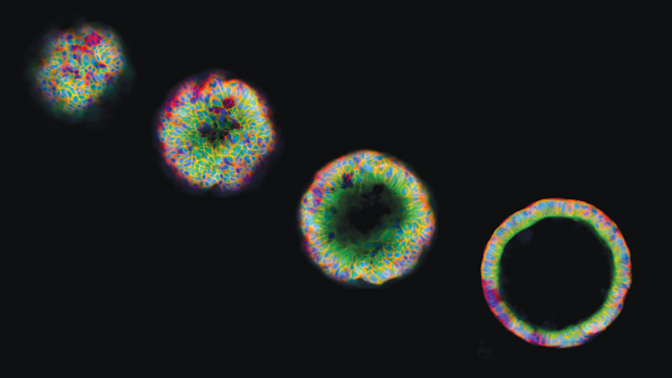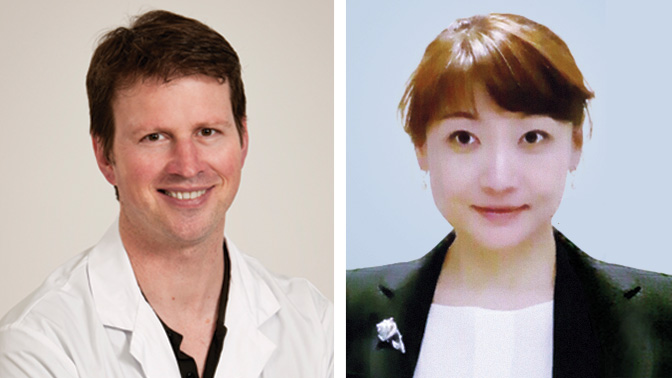
(November 30, 2017) - A study led by Dr. Thomas Waddell at the Toronto General Hospital Research Institute (TGHRI) and Dr. Andras Nagy at the Samuel Lunenfeld Research Institute describes a new method for producing high yields of cells that could be used in cell therapies.
The approach is a modified version of the induced pluripotent stem (iPS) cell technology, which was discovered by Dr. Shinya Yamanaka in 2006 at Kyoto University in Japan and won him a Nobel Prize in 2012.
The discovery of iPS cells was hailed as the beginning of medical revolution. This is because iPS cells can be used to make an array of patient-specific therapeutic cells: for example, using the technology, patient skin cells can be ‘reprogrammed’ into iPS cells that can then be used to create photoreceptors to treat vision loss. An added benefit of this approach is that the transplanted cells are not rejected by the patient’s immune system because they were made from the same patient’s skin cells.
However, to date, the use of these cells in the clinic has been limited, with only one therapy for age-related macular degeneration currently in clinical trials. Part of the reason for this is that it is difficult to use iPS cells to grow large quantities of pure cells. Also, there is the danger that iPS cells might be contaminated with stem-cell-like cells that could eventually grow into tumours.
To address this issue, the research team led Drs. Waddell and Nagy refined the iPS technology using ‘interrupted reprogramming’. This approach has enabled them to convert adult mouse cells into induced-progenitor-like (iPL) cells.
“Unlike iPS cells, which behave like stem cells and can become a wide variety of cells, the iPL cells that we created can only become a restricted number of cell types. The types of cells that they can become depends on which type of adult cells we start with, which makes it quicker and easier to purify target cells,” says Dr. Waddell.
To explore the potential use of iPL cells to treat respiratory diseases, Dr. Waddell’s team focused on a cell type—known as a Club cell—that lines the inner surface of the lungs. Club cells were converted into iPL cells using the ‘interrupted reprograming’ method, which involved genetically modifying the Club cells then exposing them to a drug. These iPL cells could then be coaxed into producing other cell types in the lung: goblet and ciliated cells, as well as other Club cells. Once the drug was removed, the iPL cells reverted back into Club cells.
These findings show that the method can be used to expand a subset of cell types, in a tightly controlled manner. In the lungs, this could translate into new therapies to speed up the healing process after lung injury, or to repair donor lungs before transplantation.
“These findings reveal an important shortcut for cell manufacturing—rather than converting adult cells into iPS cells, which then need to be converted to pluripotent cells to make the cells of interest, we can use adult cells to create iPL cells to rapidly produce relatively pure populations of the desired cell type,” says Li Guo, the graduate student who worked with Dr. Waddell on this project.
This new approach could be used to create new models of disease, quickly screen investigational drugs for efficacy or regenerate damaged tissues. However, Dr. Waddell cautions, “These are preliminary findings. Future work will test this approach in other cell types and in human cells. If we’ve learned anything in the past 10 years since the discovery of iPS cells, it is that there will be much work to be done before iPL cells can be used safely and effectively in humans.”
This work was supported by the Hospital for Sick Children Transplant and Regenerative Medicine Program, the Canadian Institutes of Health Research, the Ontario Research Fund, and the Toronto General & Western Hospital Foundation. TK Waddell holds the Pearson-Ginsberg Chair in Thoracic Surgery and the Thomson Family Chair in Translational Research. A Nagy holds a Tier 1 Canada Research Chair in Stem Cells and Regeneration.
Li Guo, Golnaz Karoubi, Pascal Duchesneau, Maria V. Shutova, Hoon-Ki Sung, Peter Tonge, Christine Bear, Ian Rogers, Andras Nagy and Thomas K Waddell. Generation of Induced Progenitor-Like Cells from Mature Epithelial Cells Using 1 Interrupted Reprogramming. Stem Cell Reports. Nov 2017.

The study was conducted by graduate student Li Guo (pictured, right) and collaborators within the laboratory of TGHRI Senior Scientist and thoracic surgeon Dr. Thomas Waddell (pictured, left).




